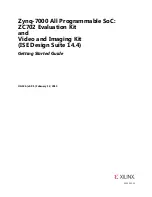
Class
0
Class
1
Class
2
Class
3
Sources
Class0 Domain (Highest Priority)
Class1 Domain
Class2 Domain
Class 3 Domain (Lowest Priority)
Reset Controller Classes
Sources
Sources
Sources
Introduction
255
SLAU356I – March 2015 – Revised June 2019
Copyright © 2015–2019, Texas Instruments Incorporated
Reset Controller (RSTCTL)
3.1
Introduction
The Reset Controller is a module that collates inputs from all of the various sources of reset in the device
and generates different classes of resets that are fed back to the device.
3.2
Reset Classification
The MSP432P4xx device contains resets of different classes, with each class resulting in a different
initialization state of the application registers. The resets are classified based on the user application view
of the device, and the extent of control required by the same over the state of the device. In different use
case conditions, either during application development, code debug, or real-time application execution, a
different class of reset may be desired to gain control over the device, without completely sacrificing the
device state.
shows the reset generation mechanism with its classes of resets. The reset priority is in
decreasing order from left to right, meaning that each reset automatically initiates all lower priority resets
(if any). However, a reset class of lower priority does not trigger a reset of higher priority. The
nomenclature of the reset classes is described in the following subsections.
Figure 3-1. Reset Classes
3.2.1 Class 0 : Power On/Off Reset (POR) Class
A 'Power On/Off Reset' (POR) refers to any type of reset that can help gain control of a device in a
completely uninitialized (or random) state. A POR may be required by the device in any of the following
cases:
•
A true power-on or power-off condition (application or removal of power to the device)
•
A 'voltage exception' condition that is generated by the power supply system (PSS). This condition can
be caused by the supervision logic for either the V
CC
or core domain voltage.
•
Exit from LPM3.5 or LPM4.5 modes of operation (initiated by the PCM)
•
A user-driven full chip reset. This reset can be initiated either through the RSTn pin, through the
debugger, through the SYSCTL.
•
DCO short-circuit fault in external resistor mode of operation.















































